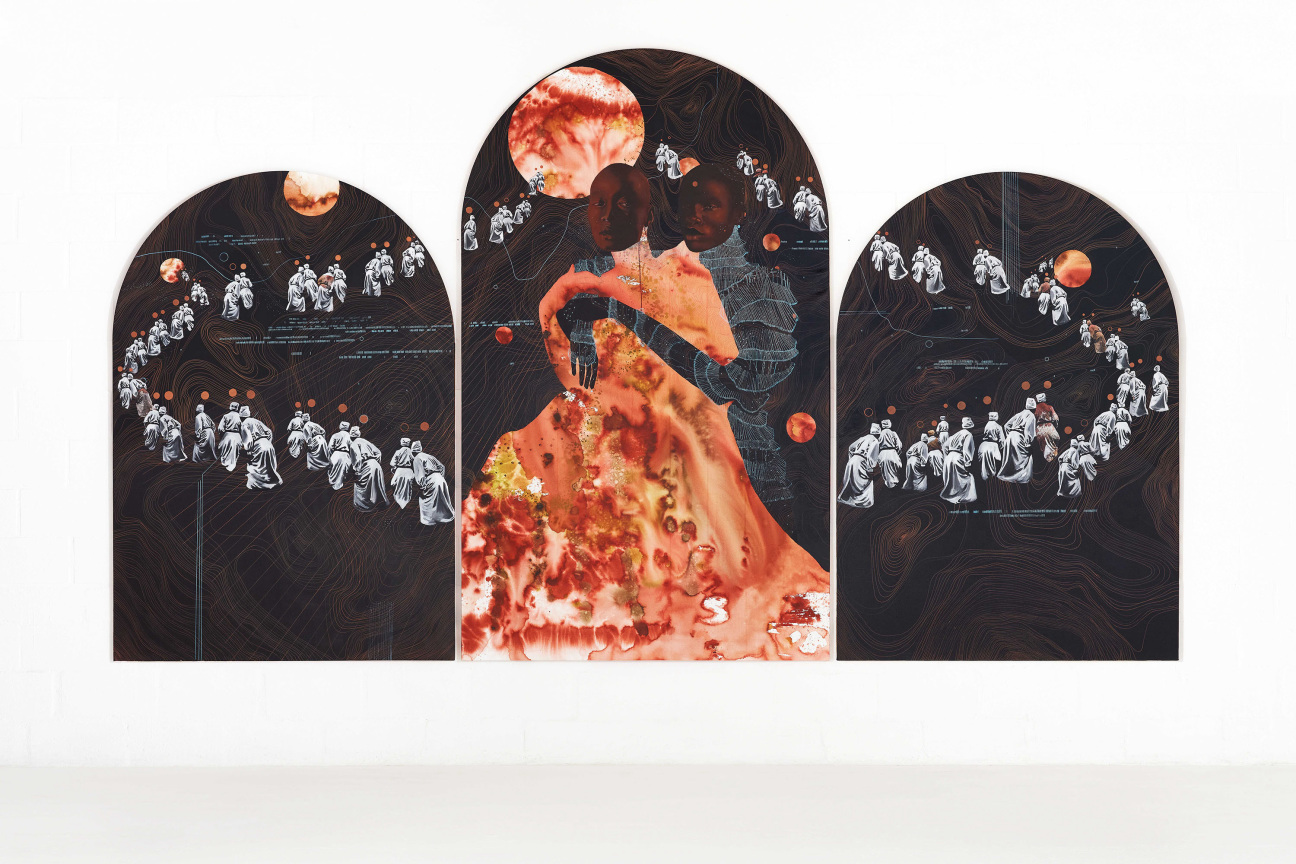
A flight between Los Angeles and Cape Town can take between 20 and 30 hours. Having just opened an LA outpost of Southern Guild, Trevyn and Julian McGowan plan to make the commute four to five times a year. “I quite enjoy flying,” says Trevyn, but the 10-hour time difference has proven strenuous. In LA, she logs onto meetings with her Cape Town team at 10 p.m. “The night feels very wrapped in the workday.”
Southern Guild opens the doors to its Melrose Hill location today, becoming the first South African gallery to land a permanent space in the United States. Their program, composed primarily of African contemporary art and design—Oluseye’s found object sculptures, for example, or Porky Hefer’s flora-and fauna-shaped seating—finds its new home in a refurbished 5,000-square-foot building on Western Avenue, a newly minted gallery row whose tenants include David Zwirner, Morán Morán, and Sargent’s Daughters. For Trevyn, “It feels like the most exciting, dynamic place in the city to be right now.”
The move, she adds, was a natural next step in the 16-year-old gallery’s trajectory. Known for the expressive, textural richness of its presentations, Southern Guild had become a longtime anchor of Design Miami, and, as its emphasis on painting and photography grew, a more recent participant in art fairs including Expo Chicago and the Armory Show. Given the high U.S. concentration of their market, Trevyn continues, “We wanted to be able to interact with our audience on a year-round basis.” Put simply, “Doing the fairs wasn’t cutting it any more.”

The story of Southern Guild begins in London, where Johannesburg-born Trevyn met her partner, Julian, a theater and opera designer on the West End. The pair returned to South Africa in 2008, launching Southern Guild in response to the increasing global resonance of narratives coming out of the African continent.
Keen to bring together unlikely collaborators, the McGowans sought out makers with unique approaches to ceramics, metalwork, and weaving, and who embedded their own personal and political narratives into their practice. (In recent years, exhibitions with artists including Andile Dyalvane and Zizipho Poswa have served as turning points in the gallery’s program). “There was a very strong sense of experimentation, of pushing a category that didn’t exist yet,” says Trevyn of a time when African designers had little visibility on the international stage.
Then came tremendous milestones: Southern Guild’s establishment on Cape Town’s V&A waterfront; its inclusion in the inaugural 2016 London Design Biennale, representing South Africa; and the acquisitionof its artists’ works by international institutions like the Philadelphia Museum of Art, LACMA, and the Met. In addition to their own tirelessness, the McGowans credit their rise in visibility to South African contemporary art museums like Zeitz MOCAA and the Norval Foundation. “We were a little more isolated before, [but] the opening of both of those institutions has increased focus on South Africa and Africa in general.”

In Los Angeles, Southern Guild is opening with two inaugural exhibitions. The first, “Mother Tongues,” is a group show featuring gallery artists including Dyalvane and Hefer, activist photographer Zanele Muholi, mixed media painter Manyaku Mashilo, and many others. The second is a solo presentation of Poswa’s technically ambitious ceramic and bronze sculptures, created during a recent summer-long ceramics residency at California State University in Long Beach.
Trevyn looks forward to more opportunities like these—for artists based in both Africa and North America to travel between the two places, expanding their respective practices through cultural dialogue. “How do we evolve and grow through interacting with the landscape?” she asks. “This is what we’re about, as a gallery and as a group of artists.”
"Mother Tongues" and "Indyebo Yakwantu (Black Bounty)" are on view through April 27, 2024 at Southern Guild in Los Angeles.










 in your life?
in your life?

